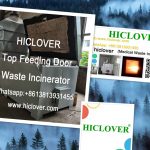the streets of the Royal Trails neighborhood were lined with new large tan bins, two per household. Two trailers loaded with dozens of bulky containers drove off as four workers delivered the new recycling and trash carts last week to Lake residents..
lRelated Read Lauren Ritchie’s columnsNewsRead Lauren Ritchie’s columnsSee all relatedí
The process has been a longtime coming. After dumping a controversial contract that used a garbage incinerator, county officials decided to change to a “1-1-1” collection system. The new 7-year contract offers residents in unincorporated Lake an option of three different-sized trash and recycling carts — 95, 65 and 35 gallons — at no additional cost.
Homeowners will receive a 95-gallon cart for trash and a 65-gallon cart for recyclables. The once-a-week trash, once-a-week recycling and once-a-week yard-waste pickup collection begins Oct. 6.
Skip McCall, Lake’s solid waste division manager, said the transition process has been smooth sailing so far, although some residents were concerned about the cart sizes.

incinerator
“You can mix the sizes of your carts,” he said. “We try to make it as user-friendly as possible.”
He said he encourages residents to test the new carts for a few weeks before opting to change the sizes.
“Trash is a very sensitive topic to talk about,” he said. “We try to give the residents options so we’re not telling them, ‘this is what you have to have.'”
The new garbage and recycling carts will be collected with trucks equipped with an automated arm, which will save money by cutting the number of workers needed per truck from three to one, McCall said. He said officials hope to increase the county’s recycling rate from 8 percent to about 25 percent during the first year.
“Our recycling percentage is very low within this county. A lot of that is attributed to everything in the past, having to go to the incinerator,” McCall said. “The more we’re able to recycle, that means our disposal cost at the landfill is going to be less.”
Last year, county commissioners voted in favor of hauling trash to a Sumter landfill operated by ACMS Inc. over continuing with the Okahumpka incinerator, which was used since 1988 and required the county to supply 163,000 tons of garbage a year. Commissioner Leslie Campione argued against the change, saying the county could have saved money with other options, including sticking with incinerator owner Covanta Energy, which proposed a $25 million recycling facility.
Officials started issuing the new trash and recycling carts in August to the 67,040 residential units affected and held 24 community meetings to inform residents of the changes. Residents may switch trash and recycling cart sizes at no charge through April 1. Extra garbage carts are available for $60 and the additional disposal cost will be charged to homeowners’ tax bills.
http://www.orlandosentinel.com/news/lake/os-lk-new-garbage-carts-lake-county-20140927-story.html










